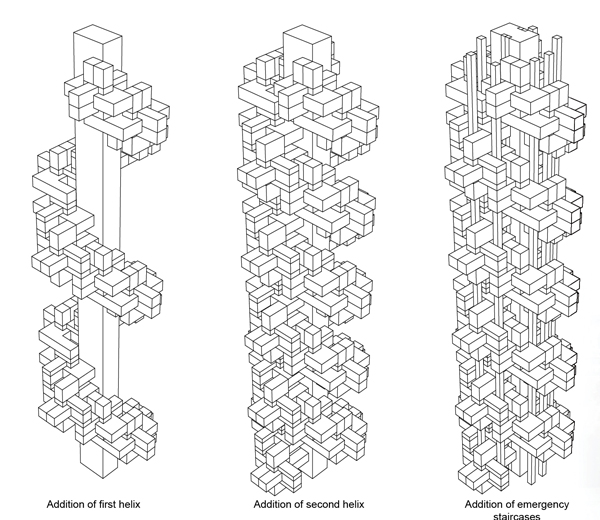McGill University architecture students Yan Jie Chen and Camille John have designed, directly across from Montreal’s Old Port, a skyscraper of glass and gardens that houses residents of the 2030s in the Néocité, a cultural revitalization project seeking to transform Montreal’s Cité du Havre.
The inspiration for the design of “Hanging Gardens” is playful yet complex: the building is based on a Chinese puzzle game with six unique, interlocking rectangles that can only be arranged in one certain way so that no spaces exist between the pieces. The students took this model and stacked it 20 times, rotating as they went, to create a 220-meter tower. The tower has a core that is wrapped by two “identical helices” that twist clockwise until the height reaches 86 stories tall.
This geometrical precision results in a skyscraper that can house 250 apartment units, and also has ample private and public outdoor gardens, meeting grounds and meditation spaces.
The frame is created as a series of cantilevered, lightweight steel trusses that are attached to the core and eight stairwells, and further supported by steel cables. Ease is sought to balance the complexity of the building’s design: Astroturf, for example, is used in place of grass so that only a vacuum cleaner is needed to tidy outdoor areas. Also, because Hanging Gardens is actually comprised of a series of repetitive designs, prefabricated steel pieces can be constructed off site and brought in to speed the construction process.
Residents will need to invest in quality window cleaners, however, to keep the views of the city from their glass walled apartments clear.
As the Cité du Havre transforms into the cultural haven Montreal residents want it to be, residents of the Hanging Gardens will watch from their perpetually green terraces above.



















